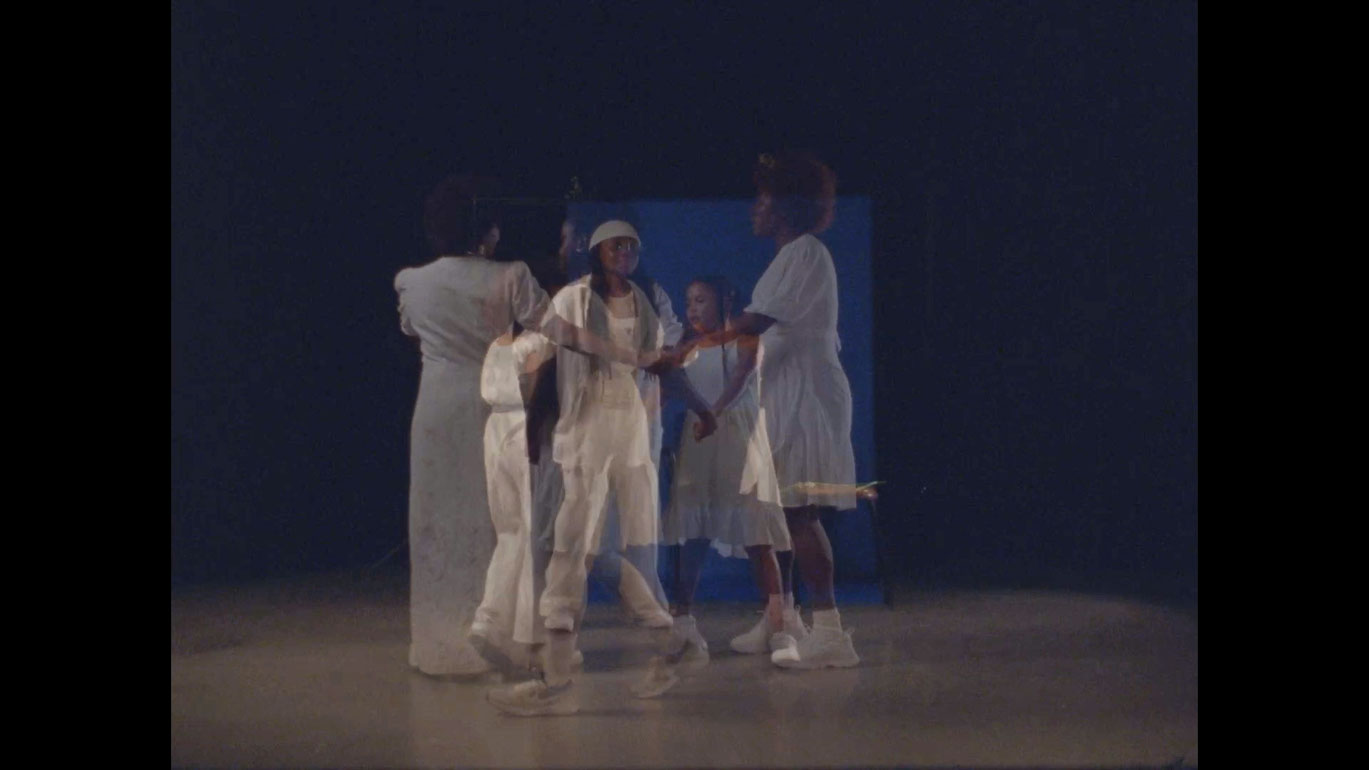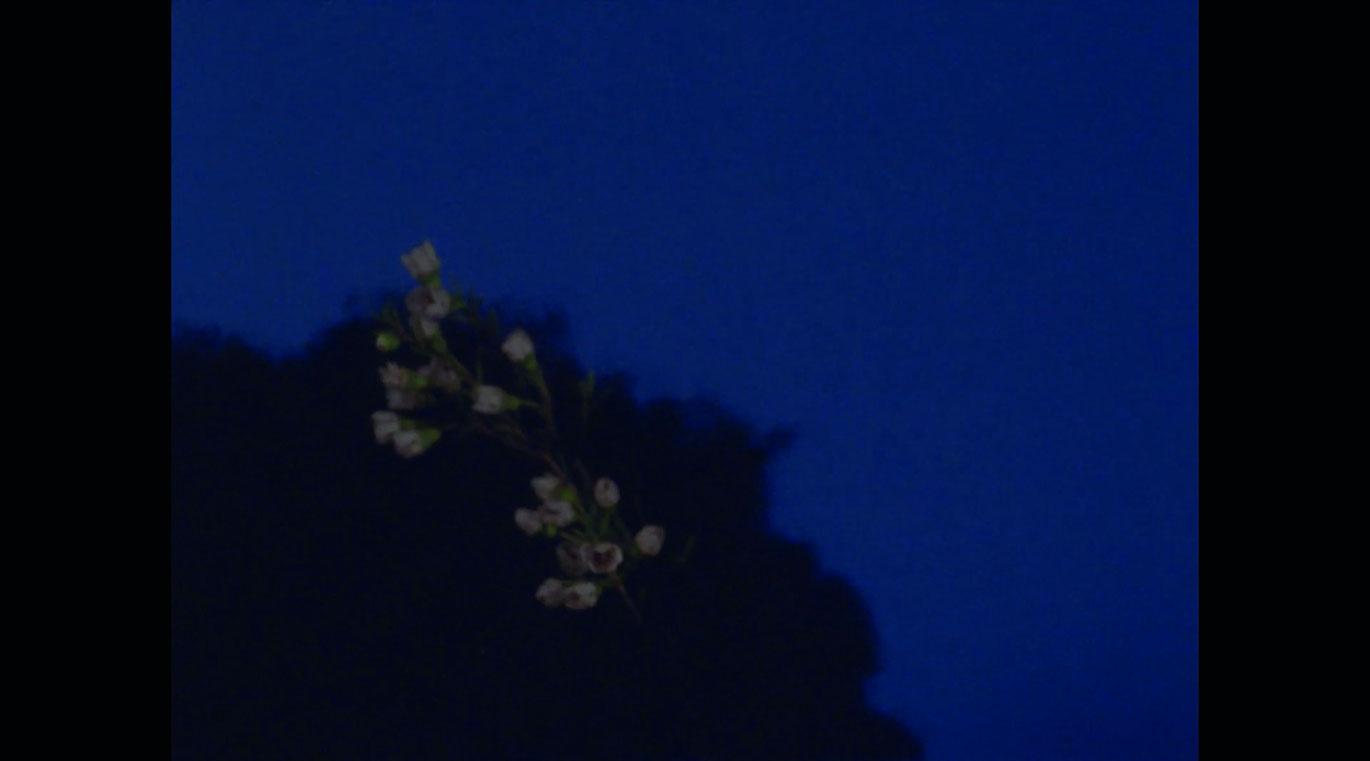Nursery Rhymes. (Holy) Water
The illusion of horizon. Draped, white lace below a sea of blue. The whirl of the projector subsides. “Bruneck, July 29th, 1855”
Artist-performer Belinda Kazeem-Kamiński enters the frame, holding a light meter, looking directly at the camera.
Rather than lull the listener to sleep, Kazeem-Kamiński’s Nursery Rhymes. (Holy) Water (2025) wakes up a colonial story. On 29 July 1855, Asue, Gambra and Schiama, three Sudanese girls, were baptized, after having been purchased by the priest Niccolò Olivieri in Cairo and taken to the Ursuline convent in Bruneck, South Tyrol.
Set against a blue backdrop with the faint sound of the rolling sea, the three girls resemble Yellow Mary, Trula and Eula frolicking on the beach in Julie Dash’s Daughters of the Dust (1991). Set in 1902, Dash’s film is a multi-generational story of Gullah islanders living at Ibo Landing, now South Carolina. Gullah people preserved their traditions from the Igbo, Mende, Twi and Yoruba peoples during enslavement and into freedom.
Kazeem-Kaminski’s visual citation evokes not only the transatlantic contexts of forced displacement. It is also a nod to the Black aesthetics of Dash, cinematographer Arthur Jafa, and production designer Kerry James Marshall, who created a film that is iconic for its mise en scène, representation of Black skin on celluloid, a challenge of the inherent bias in film stock and cameras.
The rhyme performed by the girls poses questions: what prompted their kidnapping and violent religious conversion? First through testimony (“You took us away to distant lands”) then through inquisition (“What sins we ask, what did we do?“), it is a sonic tribunal to Black displacement and colonial trespass. (Karina Griffith)
Nursery Rhymes. (Holy) Water
2025
Austria
4 min
Experimental, Artist Film
No Dialogue, English
English



